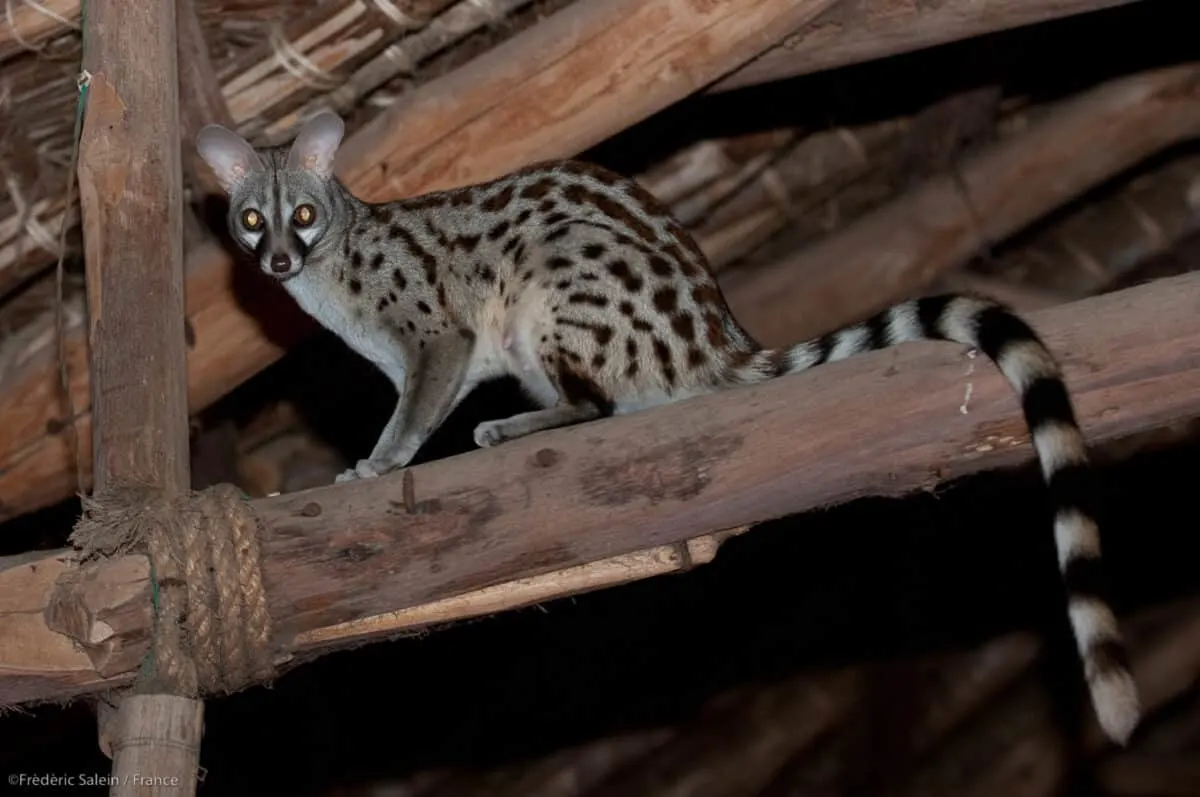Nocturnal animals have long intrigued humans with their captivating behavior and unique adaptations. These elusive creatures, specially adapted to the darkness, come to life when the sun sets, revealing a hidden world of beauty and mystery.
From the elegant spiny mouse and the majestic Indian flying fox to the camouflaged eyelash viper and the agile small-spotted genet, the realm of nocturnal animals is filled with remarkable species from diverse habitats across the globe. Whether it’s the silent flight of the barn owl, the raccoon’s resourcefulness, or the luna moth’s enchanting presence, these creatures navigate the night with precision and grace.
1. Spiny Mouse
The spiny mouse (Acomys spp.) is a fascinating nocturnal rodent in Africa and the Middle East. With a compact body covered in sharp spines, these mice possess remarkable adaptations for survival. They are agile climbers and skilled diggers, using their strong hind legs and sharp claws to navigate their habitat effectively. Spiny mice exhibit an omnivorous diet, consuming diverse food, including plant matter, insects, and small vertebrates. This adaptable feeding behavior contributes to their success and fascinating nature as a species.
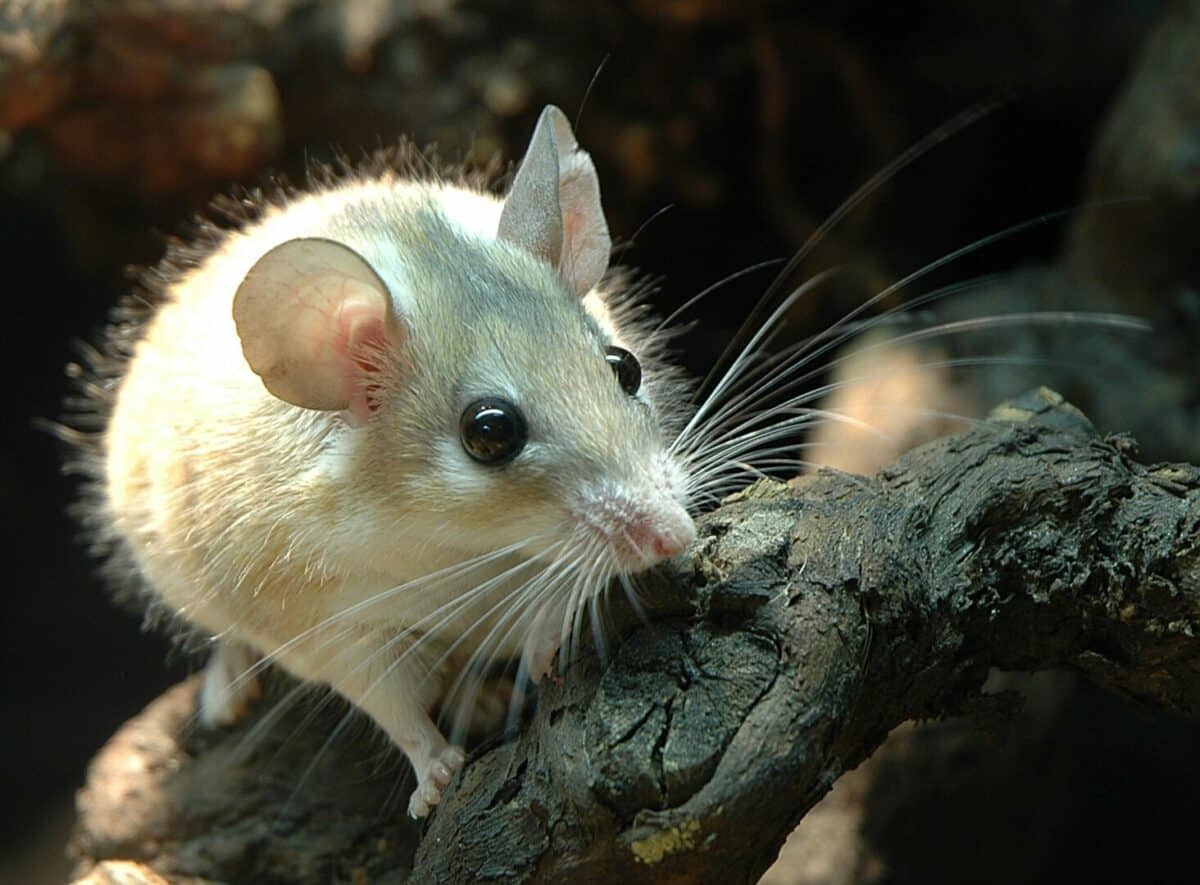
2. Indian Flying Fox
Native to South Asia, the Indian flying fox, scientifically known as Pteropus giganteus, is a remarkable nocturnal mammal. With its impressive wingspan and fruit-eating habits, this species plays a vital role in maintaining the balance of its ecosystem. As the largest bat species in India, these majestic creatures exhibit impressive wingspans of up to four feet.
Indian flying foxes primarily feed on fruits and nectar, making them crucial pollinators and seed dispersers in their ecosystems. Despite being large in size, Indian flying foxes possess remarkable flight agility and have exceptional eyesight and a keen sense of smell.
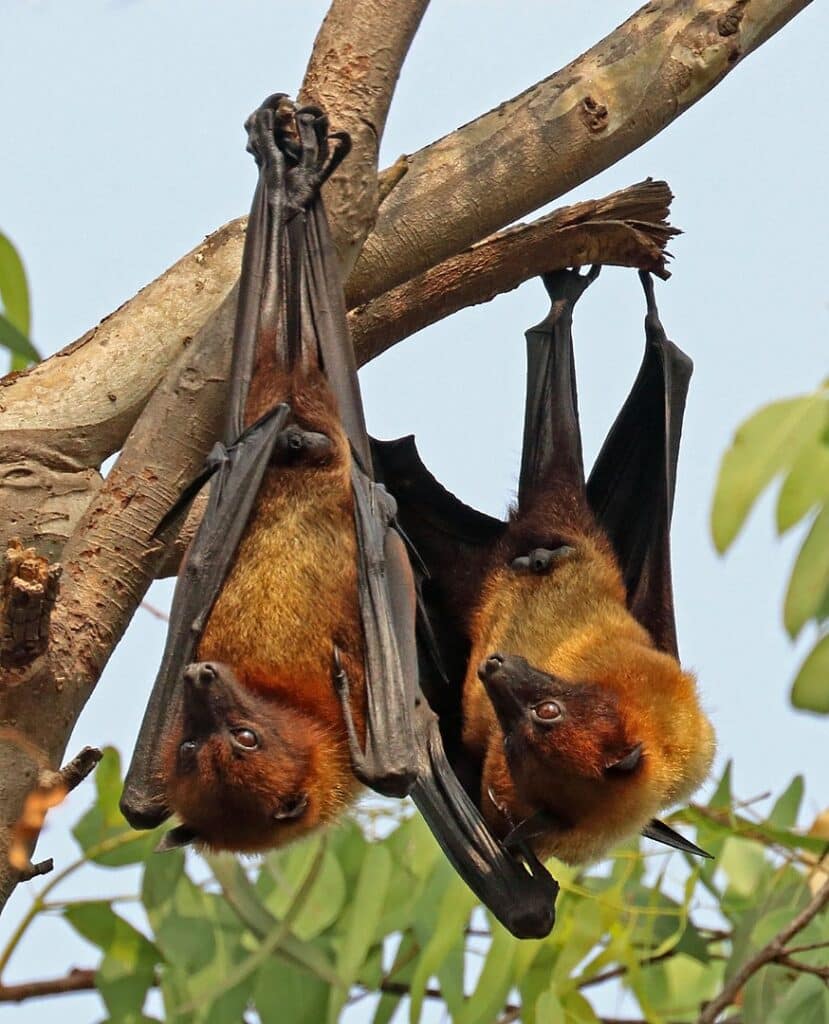
3. Eyelash Viper
Known for its distinct appearance and primarily active during the night, the eyelash viper is a venomous snake species. Native to Central and South America, this arboreal species displays vibrant colors and patterns, making it a visual marvel. The name “eyelash” derives from the scales above its eyes that resemble long lashes. These vipers rely on camouflage to blend with their surroundings while waiting for prey to pass. With a venomous bite and a remarkable hunting technique, the eyelash viper is an intriguing nocturnal predator.
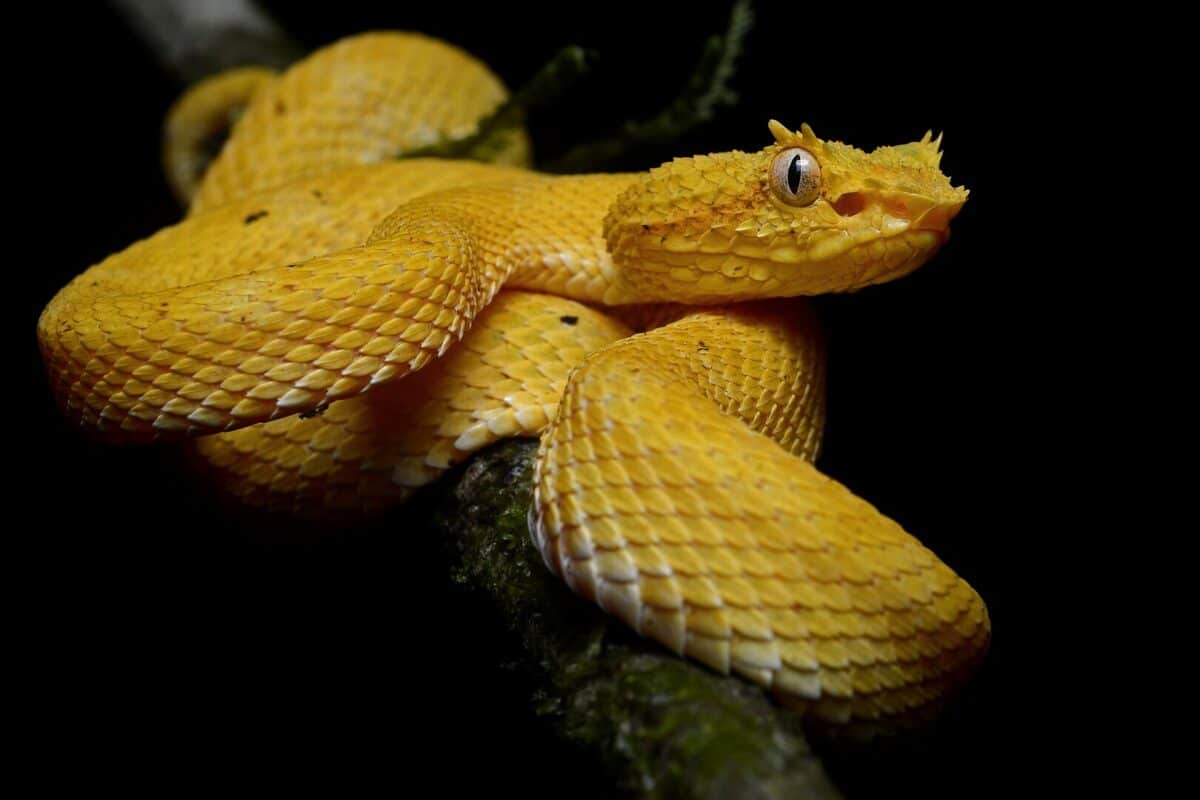
4. Small-Spotted Genet
The small-spotted genet (Genetta genetta) is a nocturnal mammal found in Africa and parts of Europe. Sporting a beautiful spotted coat, this slender creature possesses excellent climbing and jumping abilities. Small-spotted genets are skilled hunters, preying on small mammals, birds, and insects.
They are known for their adeptness at catching birds mid-flight. These solitary animals have a keen sense of smell and sharp hearing, making them efficient predators in the darkness. The small-spotted genet’s elegant appearance and nocturnal prowess make it a captivating species.
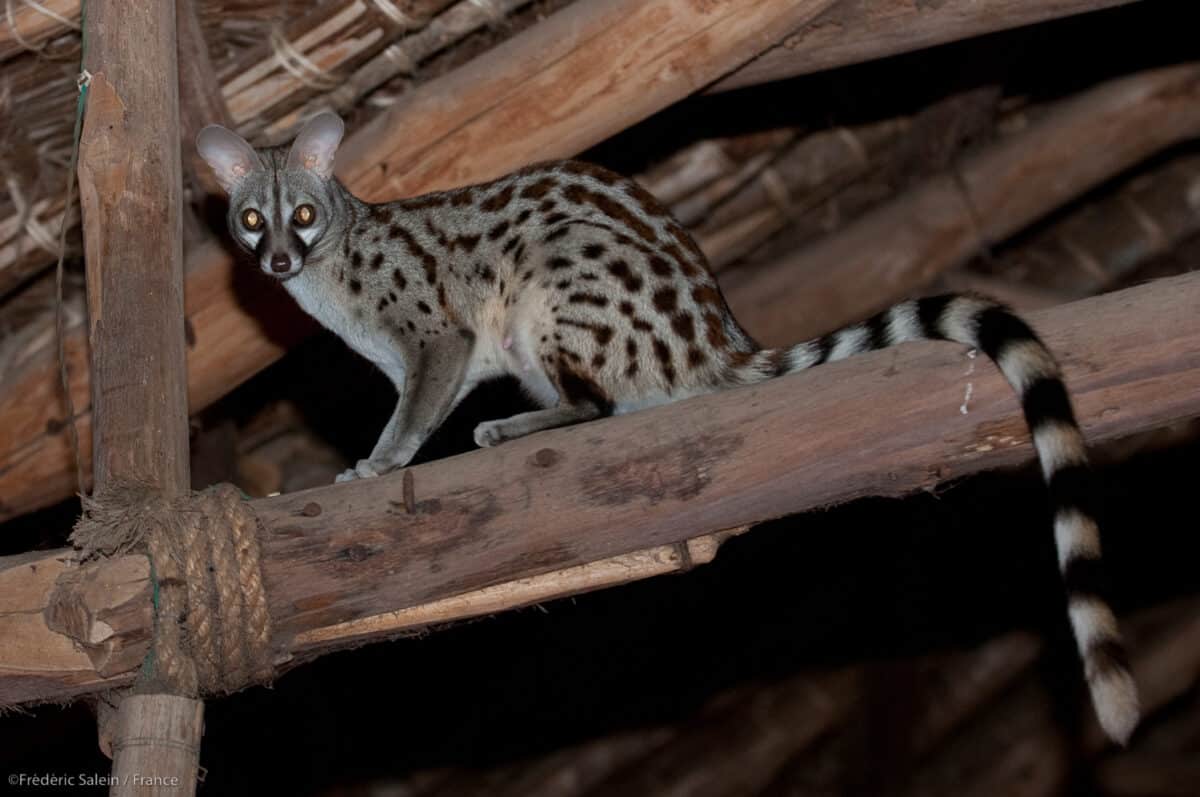
5. Barn Owl
The barn owl (Tyto alba) is found worldwide and is well-known as a nocturnal bird of prey. Renowned for its heart-shaped face and exceptional hearing, the barn owl is a silent hunter of the night. With its unique feather structure, the owl can fly silently, ensuring stealthy approaches to prey. Barn owls primarily feed on small mammals, using their keen hearing to locate prey in complete darkness. Throughout history, owls have captivated the human imagination, symbolizing wisdom with their majestic presence.
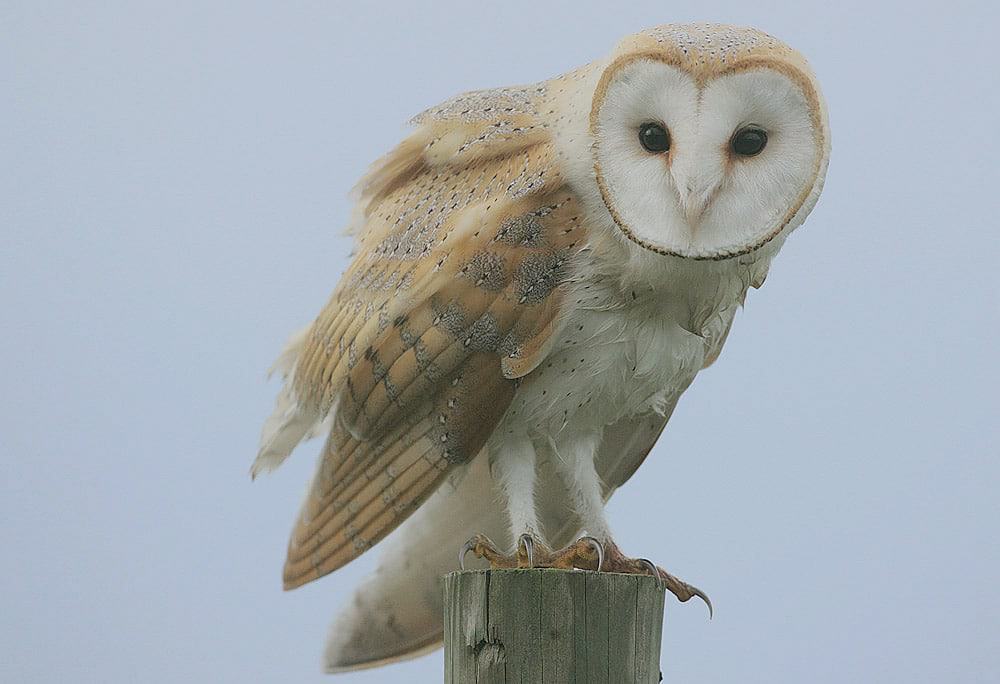
6. Raccoon
The raccoon (Procyon lotor) is a highly adaptable nocturnal mammal native to North America. Recognizable for its mask-like facial markings and ringed tail, the raccoon is an intelligent and resourceful creature. Equipped with nimble paws and excellent dexterity, raccoons are skilled foragers exploring their environment for food.
Their diet includes various plant matter, small animals, and human waste. Raccoons are highly adaptable and renowned for their problem-solving skills, contributing to their success as urban dwellers.
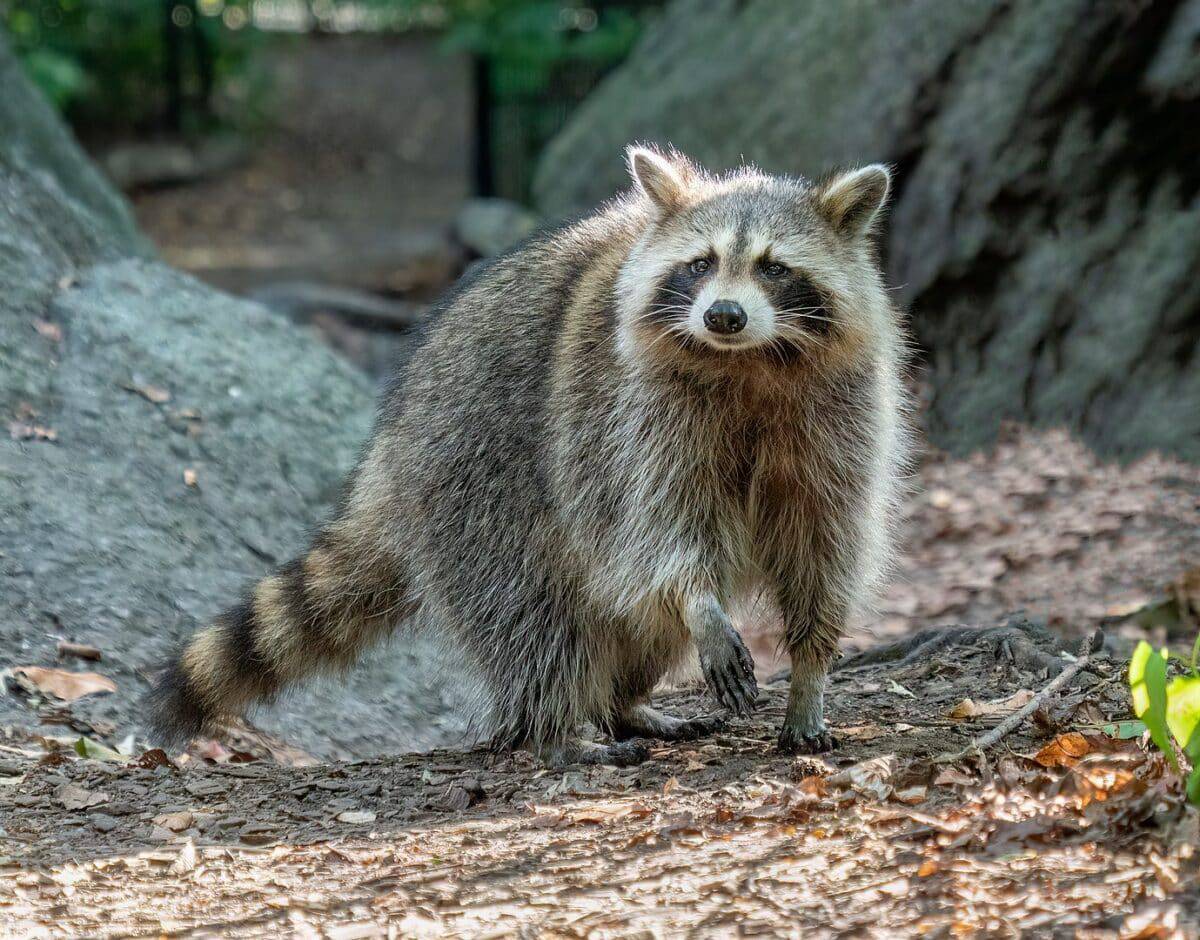
7. Luna Moth
The luna moth (Actias luna) is a mesmerizing nocturnal insect in North America. With its emerald-green wings and long, delicate tails, the luna moth is a sight to behold. Despite its enchanting appearance, the adult luna moth lives for only about a week, searching for a mate for most of its short life. During their adult stage, these moths lack functional mouthparts and do not engage in feeding. Instead, their sole purpose is reproduction, making their presence even more fleeting and magical.
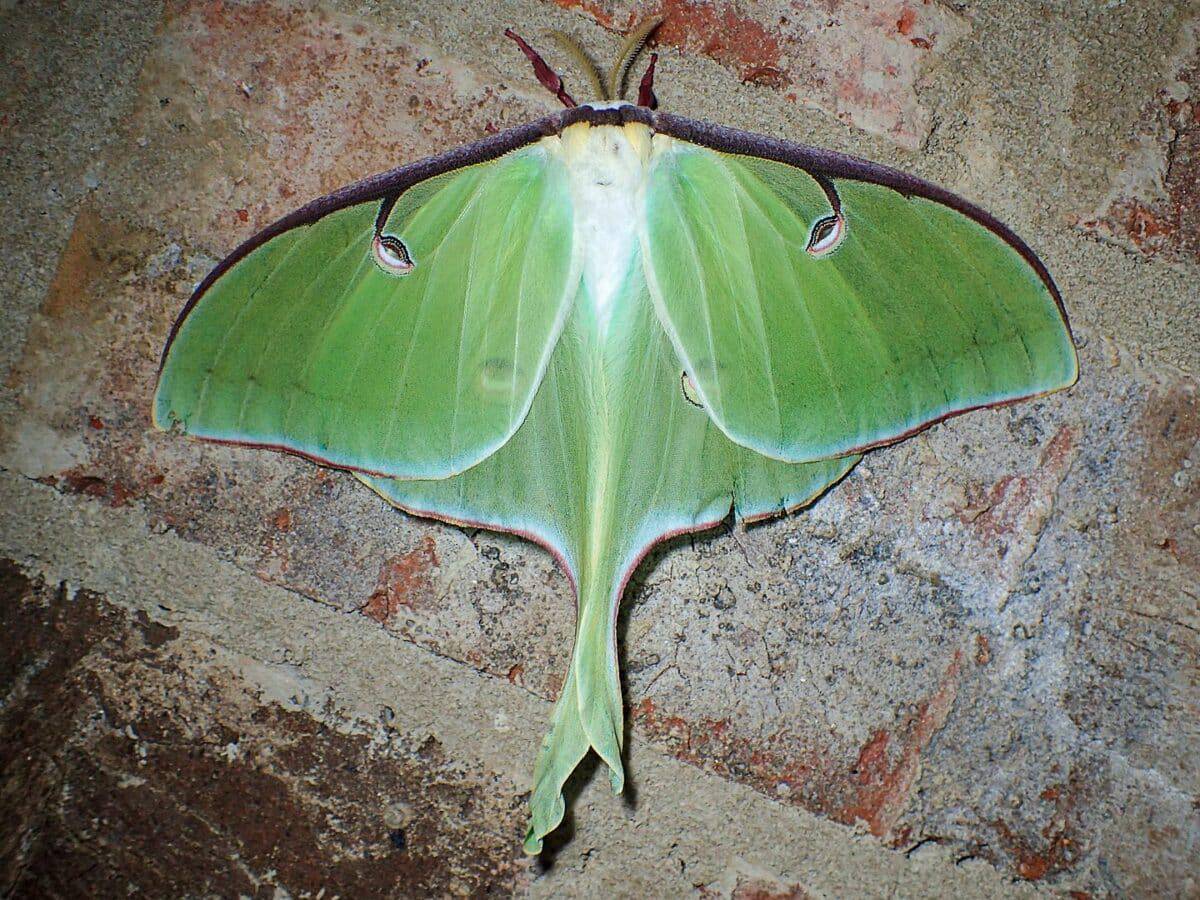
8. Linnaeus’s Two-Toed Sloth
Linnaeus’s two-toed sloth (Choloepus didactylus) is a slow-moving arboreal mammal inhabiting the rainforests of South America. These fascinating creatures are renowned for their sedentary lifestyle, spending most of their time hanging upside down from tree branches.
With specialized curved claws and a unique metabolism, Linnaeus’s two-toed sloths can thrive mainly on leaves. Their slow movements and low-energy lifestyle help them conserve energy while blending seamlessly into their forest environment.
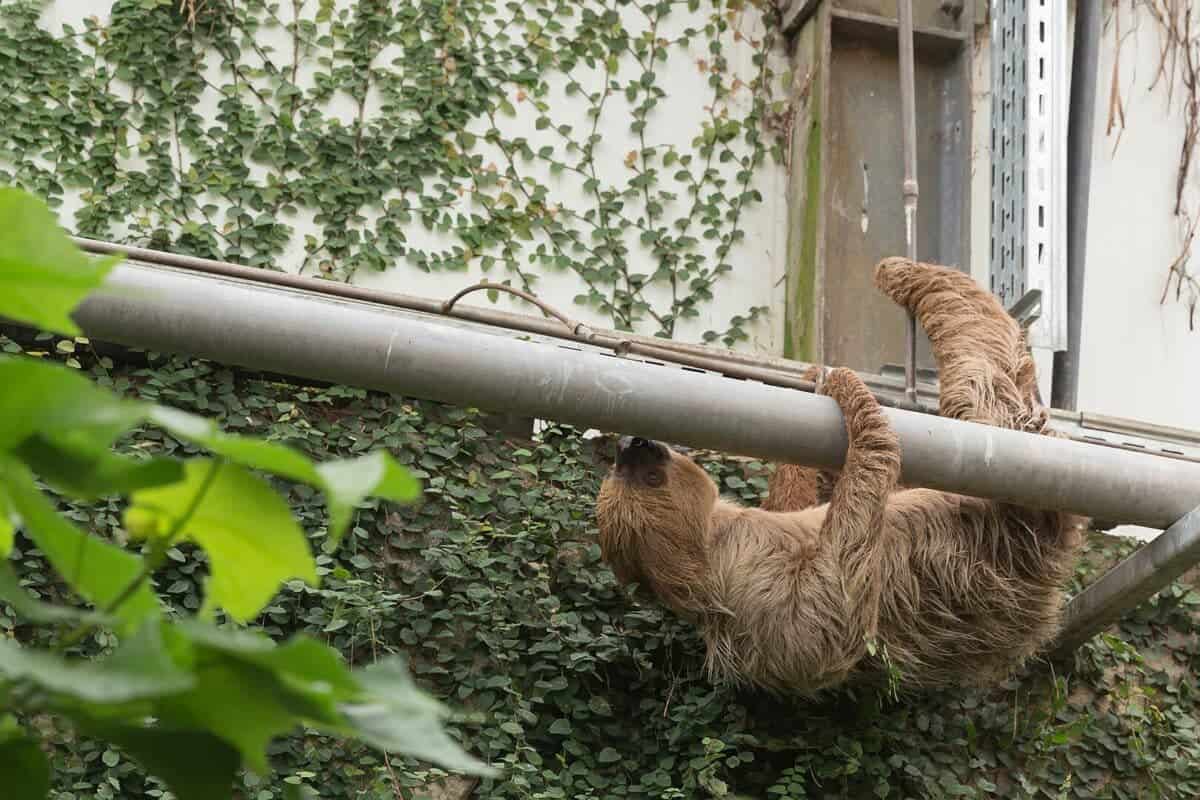
9. Gray Wolf
The gray wolf (Canis lupus) is a legendary nocturnal predator in various habitats across North America, Europe, and Asia. These highly social animals live in packs, cooperating to hunt and raise their young. Equipped with sharp teeth, powerful jaws, and exceptional endurance, gray wolves are formidable hunters.
Their nocturnal behavior allows them to take advantage of low-light conditions for successful hunting. Despite their reputation as fierce predators, gray wolves are quite essential in keeping the fragile balance of Mother Earth’s ecosystems.
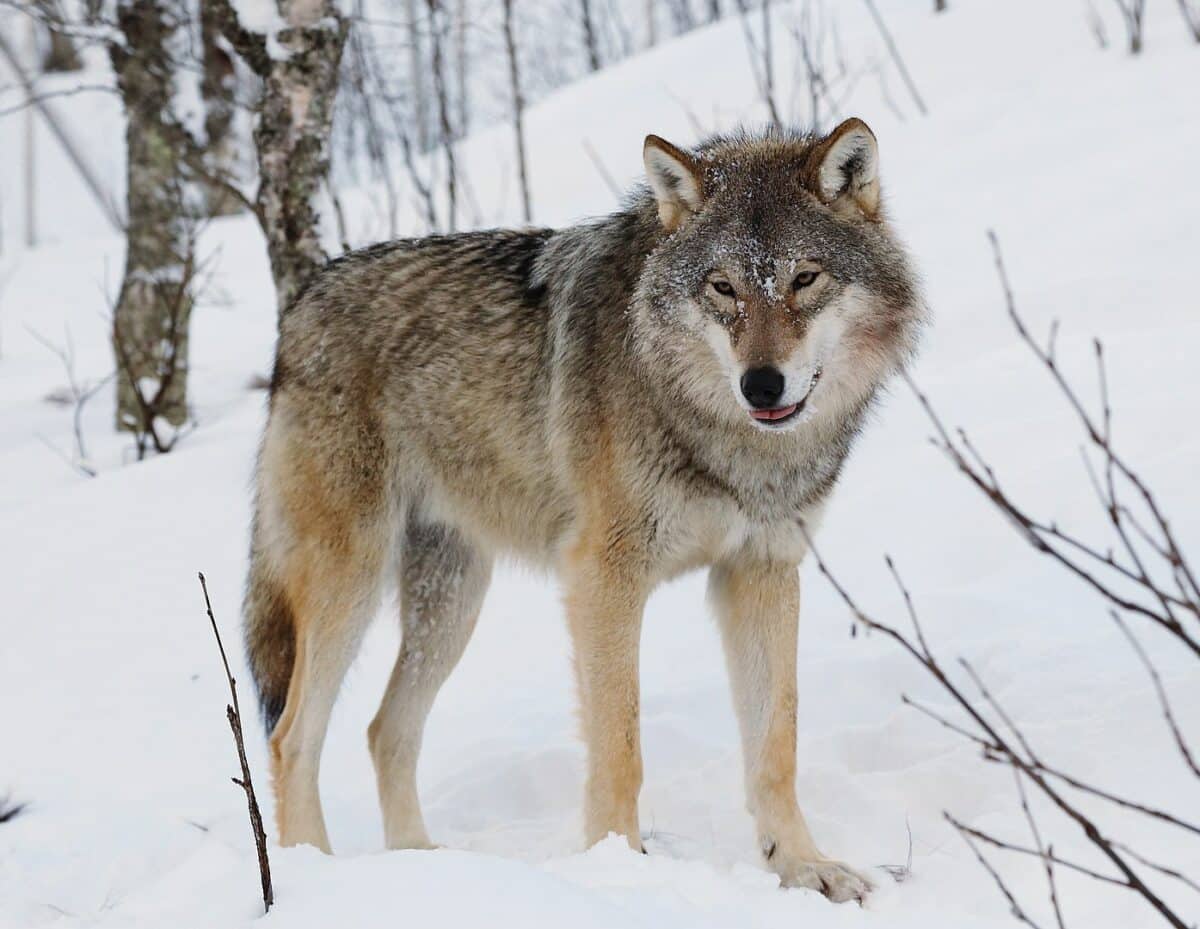
10. Pygmy Slow Loris
Native to Southeast Asia, the pygmy slow loris (Nycticebus pygmaeus) is a charming small primate with an adorable appearance. Known for its round head, large eyes, and venomous bite, the pygmy slow loris is a captivating nocturnal creature. It moves more carefully and slowly through the trees on its path through the night and uses a strong grip to navigate its forest habitat. Pygmy slow lorises primarily feed on insects, tree sap, and fruits. Sadly, these intriguing animals face threats from habitat loss and the illegal pet trade, making their conservation a critical priority.
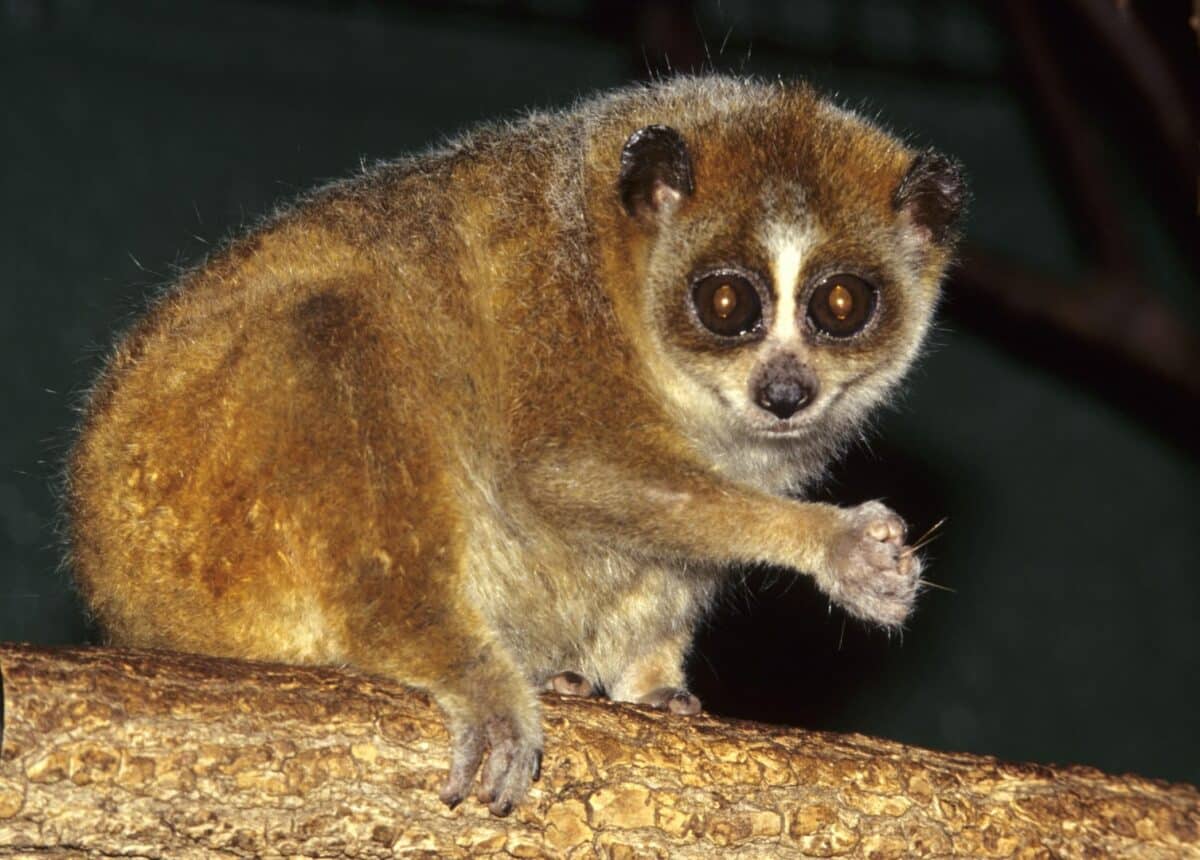
Frequently Asked Questions
What does it mean for an animal to be nocturnal?
Nocturnal animals are primarily active at night and have adapted to thrive in low-light conditions. They often possess specialized adaptations such as enhanced senses, night vision, acute hearing, or other characteristics that allow them to navigate, hunt, or communicate effectively in the dark.
Why are some animals nocturnal?
Various factors contribute to an animal’s nocturnal behavior. Some animals are nocturnal to avoid competition with diurnal (daytime) species, while others are adapted to exploit food sources that are more abundant or accessible during the night. Nocturnal behavior can also offer protection from predators or help animals conserve energy in hot environments.
Are all nocturnal animals active exclusively during the night?
While many nocturnal animals are primarily active at night, some species, known as crepuscular animals, exhibit peak activity during twilight, dawn, or dusk. These animals capitalize on the advantages of lower light levels while avoiding the complete darkness of night.
The Bottom Line
With their captivating allure, nocturnal animals display various adaptations and behaviors that enable them to flourish in the darkness. From the spiny mouse’s agility to the barn owl’s exceptional hearing and the raccoon’s resourcefulness, each creature on this list brings its unique charm and ecological significance.
Whether the luna moth’s elegant flight or the gray wolf’s mysterious presence, these nocturnal animals capture our imagination and remind us of the incredible diversity of life on our planet. By developing an understanding and fostering an appreciation for these magnificent creatures, we can actively contribute to their conservation efforts and secure the long-term preservation of their habitats for the benefit of future generations.
If you enjoyed this blog, read more on:
Top 10 Colorful Animals – Animals with Striking Hues!
Top 10 Poisonous Animals – Beware Of Nature’s Most Deadly Creatures
Top 10 Weird Animals – The Strangest Creatures on Earth
Join our Forum for free today!

- Usain Bolt vs. Peregrine Falcon – Speed Test in Their Domains - May 18, 2024
- Top 10 Animals in Yellowstone National Park - April 12, 2024
- Top 10 Omnivores - March 9, 2024

